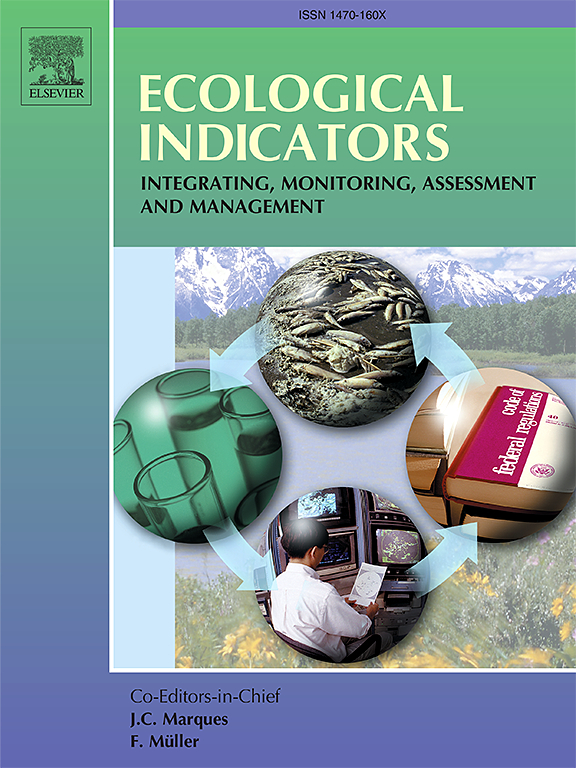Spatial-temporal evolution and multi-scenario prediction of carbon emissions from land use in the adjacent areas of nature reserves
IF 7
2区 环境科学与生态学
Q1 ENVIRONMENTAL SCIENCES
引用次数: 0
Abstract
The carbon emissions stemming from land use in adjacent areas exert a significant influence on the ecological balance of natural reserves. Examining carbon emission patterns linked to land use enables a deeper understanding of carbon dynamics in adjacent regions, thus safeguarding the functional integrity of natural reserves as vital carbon sink zones. This study focused on the protection and development belt of Wuyi Mountain National Park,1 a typical adjacent area of a nature reserve. Through the integration of spatial and statistical data, it examined the intensity and distribution characteristics of carbon emissions from 2000 to 2020. Additionally, the study employed the PLUS model to forecast land use trends and overall carbon emissions across various scenarios, including natural development, carbon sink enhancement, and carbon source control, for the years 2030 and 2060. Results indicated: (1) Between 2000 and 2020, the total carbon absorption capacity of the protection and development belt of Wuyi Mountain National Park showed a diminishing trend, contrasting with the rising trend in total carbon emissions; (2) In the vicinity of the natural reserve, there was discernible spatial variation in carbon emissions associated with land use. The eastern regions exhibited elevated emissions, whereas the southern regions demonstrated comparatively lower emissions. The extent of carbon sources continued to grow, with areas exhibiting low, medium, and high carbon emissions all displaying expansion tendencies. Areas with robust carbon absorption capacities consistently showed a decreasing trend; (3) Across all three scenarios, land allocated for construction emerged as the predominant source of carbon emissions. Notably, the carbon source control scenario exhibited the smallest net carbon emissions from land use, underscoring the significance of carbon reduction as the fundamental strategy for achieving carbon neutrality goals. This research can offer insightful experience for simulating land use patterns and estimating carbon emissions in adjacent areas with similar nature reserves, contributing to the proposal of targeted carbon neutrality policies and management measures, thereby facilitating the transition of nature reserves and their surrounding areas towards a low-carbon development path.

求助全文
约1分钟内获得全文
求助全文
来源期刊

Ecological Indicators
环境科学-环境科学
CiteScore
11.80
自引率
8.70%
发文量
1163
审稿时长
78 days
期刊介绍:
The ultimate aim of Ecological Indicators is to integrate the monitoring and assessment of ecological and environmental indicators with management practices. The journal provides a forum for the discussion of the applied scientific development and review of traditional indicator approaches as well as for theoretical, modelling and quantitative applications such as index development. Research into the following areas will be published.
• All aspects of ecological and environmental indicators and indices.
• New indicators, and new approaches and methods for indicator development, testing and use.
• Development and modelling of indices, e.g. application of indicator suites across multiple scales and resources.
• Analysis and research of resource, system- and scale-specific indicators.
• Methods for integration of social and other valuation metrics for the production of scientifically rigorous and politically-relevant assessments using indicator-based monitoring and assessment programs.
• How research indicators can be transformed into direct application for management purposes.
• Broader assessment objectives and methods, e.g. biodiversity, biological integrity, and sustainability, through the use of indicators.
• Resource-specific indicators such as landscape, agroecosystems, forests, wetlands, etc.
 求助内容:
求助内容: 应助结果提醒方式:
应助结果提醒方式:


